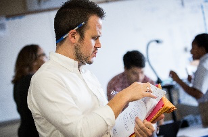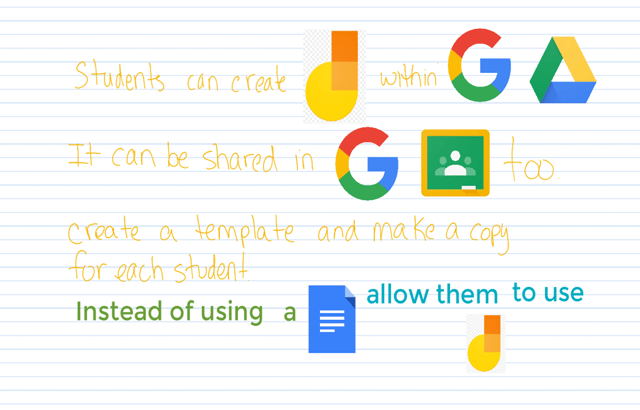Three Simple Goals Schools Can Strive for in a Pandemic
 Insights By Jake Jung
Insights By Jake Jung
Like everyone reading this, I had no clue any of this was going to happen and had absolutely no plan for what to do if something like this occurred. Yes, that this.
But here we are in mid-April: holding staff meetings online, teaching students with pre-recorded videos and grading work they uploaded via picture. This is normally the time of the year when we’re hitting our full stride as we gear up for that final push to the finish; this go-round, though, it’s as if we peeled off and started a whole new marathon just as we were ending the first.
Between setting up and operating distance learning, figuring out what teaching and giving feedback to students looks like in a fully-remote setting and trying to ensure we’re there for the people that depend on us each day for guidance and instruction, we’ve got our work cut out for us.
Add to that the fact that we’re doing all this from the (dis)comfort of our couches and kitchen tables while our own kids, partners, and pets vie for their share of the already limited space in our homes – multiplied by the stress and anxiety inherent to a situation like the one we’re in – and you’ve got a problem as perplexing and daunting as any I’ve seen.
Parents are being pushed to extremes as they’re being asked to supplement or in some cases fully implement their child’s educational plan while in many instances still working full-time jobs. Our nation’s teachers are building the plane as they fly it trying to figure out best practices for virtual teaching while simultaneously doing just that. To say nothing of the teachers that also happen to be parents who are somehow doing it all by being everything for everyone all at once.
In my experience, the first day of school in the fall is almost always the hardest and longest day of every school year. This year was no different; it just happened to have two first days and I can say without a doubt that the second one was infinitely more intense than the first.
But we’ve done it, hopefully.
In fact, most schools are already closing in on one month of online learning. Given that – and the fact that more and more states and localities are announcing they’ll stick to virtual schooling for the remainder of the year – now is a great time to think a little more deeply about what our schools and teachers should be striving to do for the rest of the year.
Maslow’s Hierarchy of Needs
As most anyone who’s spent a good amount of time in education can tell you, schools play many roles in the lives of children and families. More than just a center for test preparation, schools provide a space for students and families to feel safe, to commune with friends, to learn, to experience new things, and—in the most basic way and elemental way—to just be.

Considered in the context of Abraham Maslow’s Hierarchy of Needs – a “Theory of Human Motivation” that’s a North Star for nearly every educator in the country – schools are a fairly unique institution in that they are in the position to provide every single one of these needs for a child over the course of their time as a student.
Indeed, in many instances, schools may provide all these things for a student in a single day. From warm meals, to a sense of safety and belonging, to the feeling of pride when they’ve done well on a test, to that sense of accomplishment when they’ve finished a new art project and can’t wait to show it off to their family, schools are the one-stop shop for children to meet their basic needs and find a sense of fulfillment.
And so, the question is begged: with so many school buildings shuttered for the rest of the year, how will all those needs be met?
Three Simple Goals for the Next Two Months
1. Schools should provide safety and basic needs
As noted vis-à-vis Maslow’s Hierarchy, students are unable or unlikely to learn unless their most basic needs are met. Schools should thus first strive to provide at least a sense of safety and if possible those very needs.
Access to food, water and shelter are absolute necessities, and schools must step up in this time to ensure all students and families know how and where to find these things. To the extent possible, schools should provide these resources directly.
For some students in certain situations, school might be the place where they feel their safest and most secure on each day. For the more fortunate others, school is yet another place where they’re free to be themselves and feel assured of their existence. For all students, school needs to be place where they can feel positive and reassured and valued.
Though we can’t provide physical shelter right now, there are a whole lot of other ways we can help.
Here are ideas.
Connect with 100% of your families and assess their needs
Make (or edit) a database of student and family contact information. Assign each teacher and staff member a cohort of students to communicate with regularly throughout this time.
Make note of any families that need the basics and find a way to get them what they need
There are plenty of shelters, food banks, and organizations that are shining during this time in their efforts to provide for those most in need.
Many schools have opened to the public as a meal distribution center.
Calendar regular time to talk one-on-one with each student/family
You can use this time to check in with them about what they’ve been doing and how they’re spending their time – sometimes just talking about things is everything!
Consistency and structure, especially in this time, are key!
2. Schools should provide space for community
As the goals of safety and security are realized, schools should seek to provide a space for kids and parents to build community. Especially considering the feelings of loneliness, anxiety and alienation that many may feel in isolation, it’s imperative for schools to step up and fill that void in the lives of our students.
If I’ve heard one common refrain from my students in the past couple of weeks, it’s that they’re bored. If I’ve heard another, it’s that they miss school. This crisis, if it’s done anything, has really highlighted schools’ roles as a community center and a place for students, families, and staff to simply be.
Absent of a common building and the ability to be in a shared physical space, we as educators must still strive to create an environment that fosters a sense of togetherness and engenders a sense of belonging. Our kids need it. Their parents need it. We need it.
Here are some concrete ideas.
Set up informal digital hangouts
Using Zoom or Google Meet, set up a structured time where students and teachers are on a Zoom call together – think of it like a supervised digital recess!
Highlight students on your school’s social media pages
Have a student who is working particularly hard on an assignment? Have their parent send a photo of them working and get them featured on your school’s Instagram page!
Schedule formal online events
Have a Zoom dance party with your 4th period math class or a virtual Show and Tell with your homeroom every Friday
…in general…
These can be super planned out if that’s your MO, but don’t underestimate the power of allowing your students to just be “in the same room” as each other and let things happen naturally!
3. Schools should provide learning
Finally – and only after those more basic needs have been realized – schools should push towards rigorous learning and instruction. It goes without saying that students still have much to learn in a school year that’s already been interrupted and will likely be cut short by this pandemic, so schools must lead the way in providing daily remote instruction to students.
Resources abound to achieve these ends, and each school and district will have to determine what’s most feasible given the realities of their unique situations, but schools should be careful to never become a source of more stress in an already very stressful time for all.
Learning can and should be happening during this time as students need to be ready for next year, but we must remember to keep everything in perspective.
Here are some things to keep in mind.
Define your learning goals
As we’ll likely be online for the remainder of this year, and as we know that this may not be as effective as in-person instruction, we as educators must triage what we are going to teach. To help decide what’s most important to teach, ask yourself the following questions:
- Is it pivotal to set them up for success with next year’s content?
- Does it lend itself easily to online instruction?
Set up your online learning
Google Classrooms is an incredible tool to organize your students and disseminate instructions and assignments. It also makes it easy to grade and return work to students and, as a bonus, is just as easy to access from a computer or a phone.
…but keep things simple...
Whether choosing Google Classrooms or another platform altogether, remember to start small and keep things simple at first; you can always build on a successful foundation later.
Teach and re-teach
Whether by live Zoom, pre-recorded videos, or detailed PowerPoints uploaded to your class stream, get your students the quality instruction and feedback they need and deserve to learn and grow.
…and assume the best…
Students and families may be in tough situations right now and it’s very important to keep that in mind as you’re grading and returning work. Students might have a sick relative, a difficult home situation, Wi-Fi issues, computer problems, or a range of other issues and all these things cause anxiety – the last thing we should be doing is piling on even more.
As we think forward to how we can close this year out with a strong finish, it bears acknowledging that this is an overwhelming reality and an unprecedented time. Everyone – from students, to families, to teachers, to administrators – is feeling the strain of this situation. Our first job as schools must be to make sure we’re providing those basic needs for our students and that we remain a source of strong psychological support for their families; only then can we even begin to think about teaching and learning.
I’ll never forget the elation I felt one sweaty afternoon in June of 2010 when my class presented me with a card on the last day of school. It was filled with short notes and thoughts of appreciation and was a touching gesture that made all the hard work that year worth it.
One comment, in particular, pulled at my heart then and it’s as good a way as I can think of to end this story now: “Thanks for teaching us this year, Mr. Jung, but mostly thanks for just being there.” May we all strive to be nothing if not there for these students in this time.
As with everything in education, I hope this can be used as a resource to inspire reflection and action. If you have any thoughts, comments or suggestions on other ways schools and teachers can provide in this time, please reach out and share!




